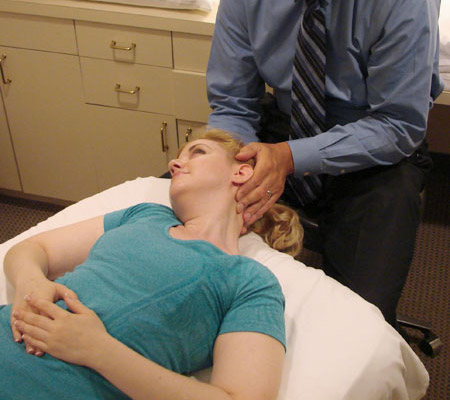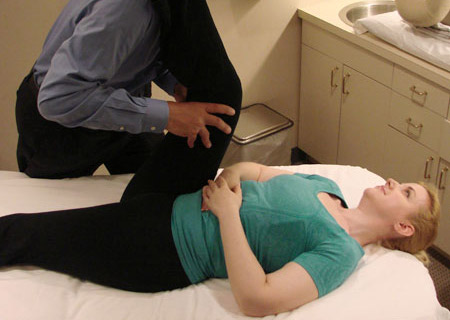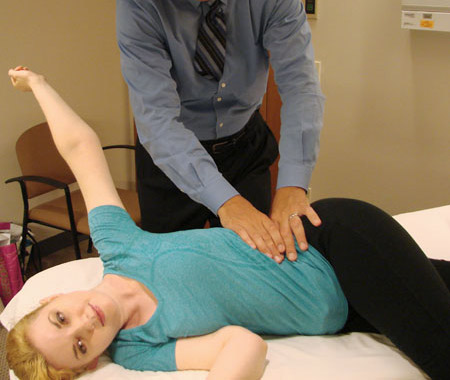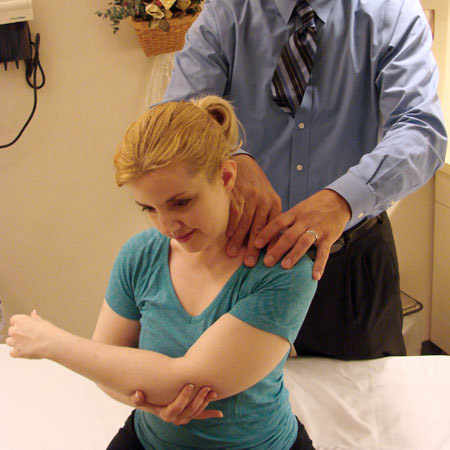Introduction to Active Release Technique
Active Release Technique® (or ART) is a patented soft tissue technique that treats problems with muscles, tendons, ligaments, fascia (connective tissue), and nerves. People with various types of musculoskeletal conditions can benefit from ART. These conditions all have one important similarity: They are frequently the result of overused muscles, causing muscle spasm, scar tissue and eventual loss of function within a region of the body.1
- How does overuse affects the muscles?
- What makes Active Release Technique different from other techniques?
- Who might benefit from Active Release Technique?
- What should I expect during an Active Release Technique session?
- Getting an appointment for an ART session
How does overuse affects the muscles?
When muscles (and other soft tissues) are overused, three types of problems may result:
- Acute conditions such as pulls, tears, muscle spasm or contracture, etc.
- Small tears resulting from repetitive motion (also known as micro-trauma).
- Hypoxia or a lack of oxygen to the injured area.
Your body responds to these occurrences by producing tough, dense scar tissue in the problem area. This scar tissue restricts healthy tissues, preventing them from moving freely. As more scar tissue builds, your muscles weaken and become shorter, nerves can become trapped, and the tension that is placed on the tendons might even cause tendon inflammation or tendonitis. Eventually, all of this leads to a reduced range of motion, loss of strength, and pain. In cases where a nerve is trapped, you might experience tingling, numbness, and weakness as well.1
What makes Active Release Technique different from other techniques?
The difference between ART and other techniques is that during an ART treatment, the patient actively moves the affected structure (muscle or ligament) while the practitioner presses or maintains contact on the injured area. This allows the practitioner to feel the structure as it moves under their contact, and to effectively treat those restricted muscles, tendons, or ligaments.
Who might benefit from Active Release Technique?
Over 500 specific moves make up the treatment protocols used in ART, allowing the practitioner to tailor treatment to the unique needs of each patient. Individuals who may benefit from ART include:
- Members of the athletic community, both recreational and professional.
- Chronic pain patients with symptoms mimicking an overuse syndrome.
- Anyone who has not been able to find relief through conventional therapies.
What should I expect during an Active Release Technique session?
An ART session is both an examination and a treatment. As the ART website explains, “the provider uses his or her hands to evaluate the texture, tightness, and movement of muscles, fascia, tendons, ligaments, and nerves. Abnormal tissues are treated by combining precisely directed tension with very specific patient movements.”
The specific techniques that are used vary according to the needs of the patient, but examples include:

Neck stretch while the patient is lying on their back

Hamstring stretch while patient is lying on their back

Side-lying stretch for patients with lower back pain

Seated mid-back stretch for people who spend a lot of
time on the computer
ART is a specific, targeted treatment, and patients often see results within two to four weeks, or three to six visits.
Getting an appointment for an ART session
Only healthcare providers with a license to treat soft-tissue injuries or conditions can become certified in ART and treat patients using this technique. These include chiropractors, physical therapists, massage therapists, certified athletic trainers, and medical doctors. However, you do not need a prescription in order to be treated using the ART technique. You only need to ensure that the healthcare professional you make an appointment with is properly ART certified. Get a physical therapy appointment at HSS.
Posted: 8/30/2012
Authors
Related articles
References
1) What is Active Release Techniques (ART) to Providers?, accessed May 24th, 2012